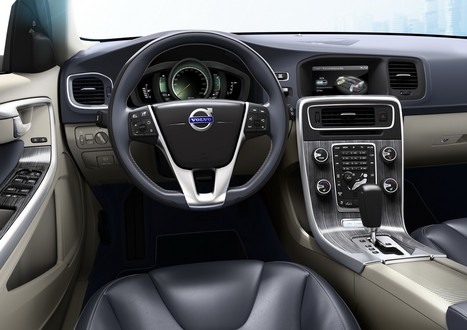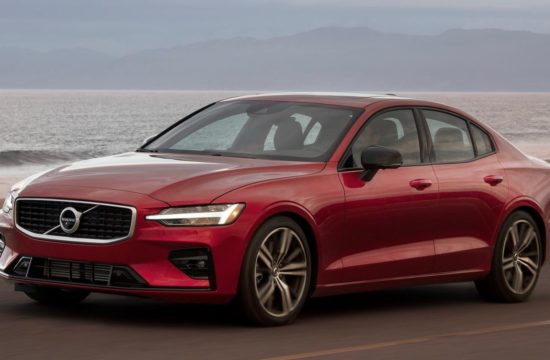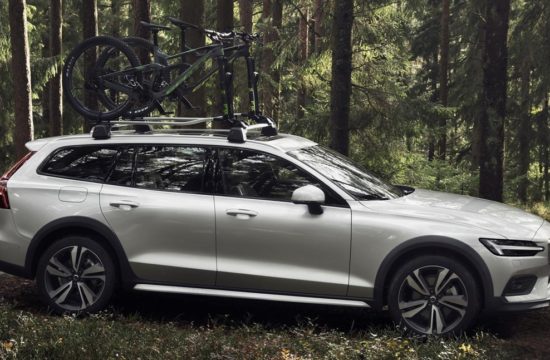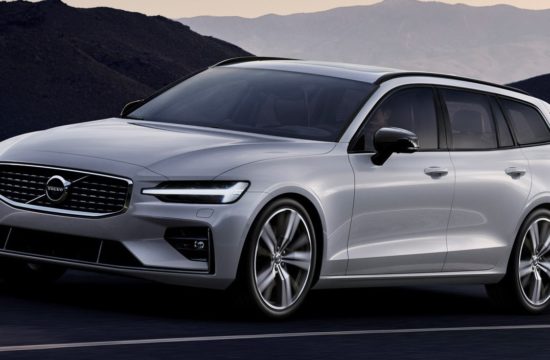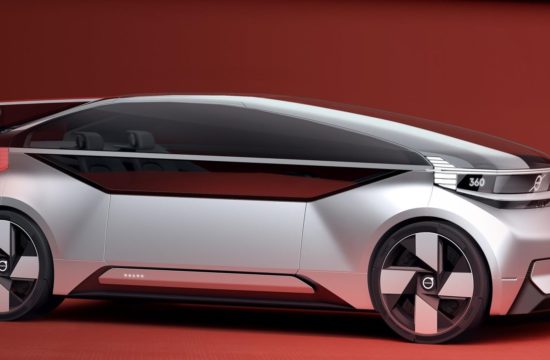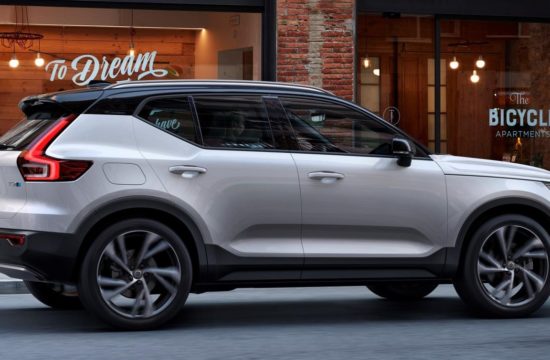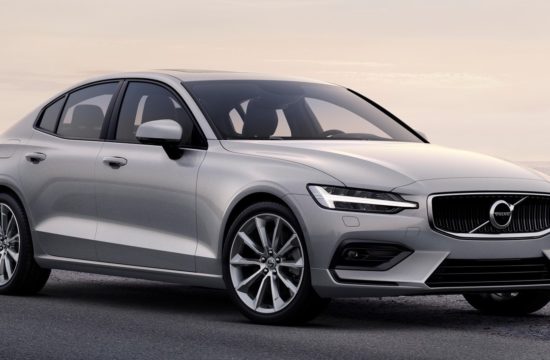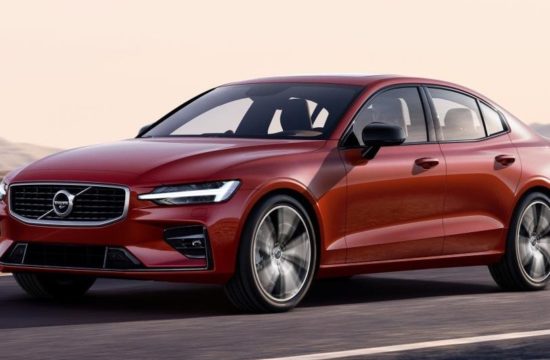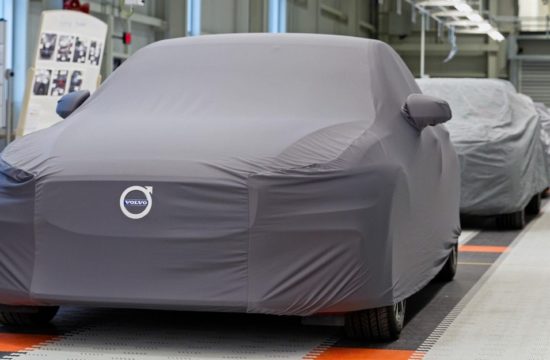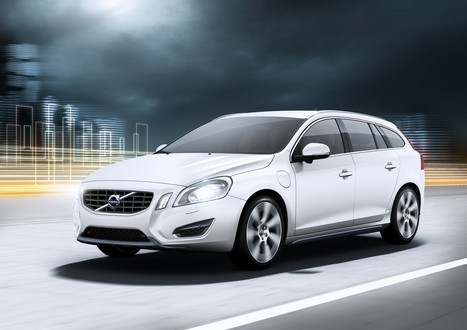
A while back Volvo promised to unveil a groundbreaking hybrid car at the Geneva Motor Show. Now with just over a week remaining to the show, Volvo released more details on the V60 Plug-in Hybrid.
The car looks like a normal V60 but they say it has carbon dioxide emissions below 50 g/km. Developed jointly by Volvo Cars and energy supplier Vattenfall, the car is set for market launch in 2012.
The car is powered by the world’s first diesel plug-in hybrid system consisting of a 2.4-litre five-cylinder turbocharged diesel with 215 hp and 400 Nm and a 70 hp electric motor. The car can run on pure electricity or diesel or a combination of both. At the touch of a button the driver can decide how he or she wants to drive.
The “Pure” button makes the car run entirely on electricity, giving it a range of up to 50 kilometres. Press “Hybrid” and you are driving a high-efficiency hybrid with average carbon dioxide emissions of just 49 g/km. Choose “Power” and you’ll have at your command a veritable powerplant providing a combined total of 215 + 70 horsepower and acceleration from 0-100 km/h in just 6.9 seconds. As an electric car it has a range of up to 32 miles.
The new technology also underscores the fact that electric power is the future for the transport sector. An electric motor is about four times more energy-efficient than a combustion engine, and it offers several additional benefits such as far lower fuel costs, no local CO2 emissions and much quieter operation.
We should wait for the real world test to see if it can really do 50 g/km CO2 with average fuel consumption of 1.9 liter/100 km – or 150 mpg . That is an unbelievably good figure for a car 285 hp and decent performance. Specially as it’s a highly practical and spacious estate car.
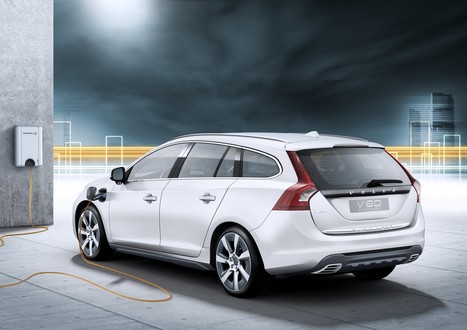
In addition to its three driving modes, the V60 Plug-in Hybrid features a number of other possibilities and benefits:
- The driver can choose to save battery capacity in order to be sure of driving on clean electricity later, for instance after entering the city. In order to maintain a sufficient battery charge level, the car is powered by its diesel engine.
- Pushing the AWD button in the centre stack activates electric four-wheel drive. Instead of the mechanical power transmission of the conventional AWD system, the central control unit manages torque distribution to the diesel-driven front wheels and the electrically powered rear axle.
- Using the car setup menu, the driver can key in the planned route’s distance (short, medium or long). The control system calculates the balance between diesel and electric power to obtain the lowest possible CO2 emissions for the given distance.
The Volvo V60 Plug-in Hybrid is recharged via a regular power socket (230V/6A, 10A or 16A). The charging time depends on the level of the current. A full 10A charge takes 4.5 hours. The time is shortened to 3 hours with 16A, while a charge in a 6A socket takes 7.5 hours.
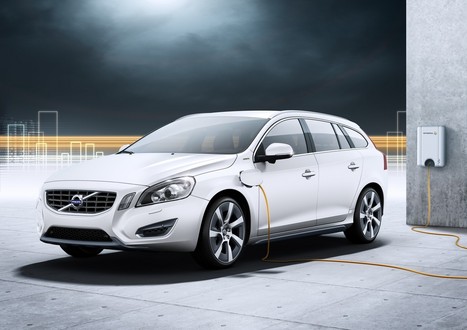
All safety systems in the Volvo V60 will also be available in the plug-in hybrid version. However, electric power also adds new possible safety scenarios and these too must be dealt with. Volvo’s safety experts have analysed the five accident sequence phases and developed unique solutions for the battery and for protection of the occupants as necessary.
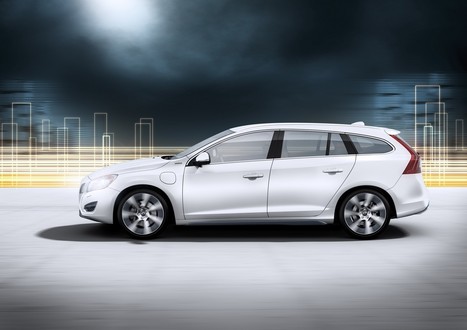
Electrification of the transport sector is an important step in the fight against climate change. Electricity is a highly beneficial fuel:
- An electric motor is almost four times as efficient as a regular combustion engine. This means that an electrically powered car consumes less energy and thus produces lower emissions, even if it is powered by a blend of electricity sources that include fossil fuels.
- European electricity production has an emission ceiling. This means that even if all vehicles were to run on electricity, electricity production itself is not allowed to produce more carbon dioxide. This emission ceiling will be gradually lowered over a period of time.
- Electricity is an excellent source of energy. It does not risk running out, and it can be produced virtually without any CO2 emissions.
- Emissions from millions of exhaust tailpipes are transferred to a small number of production facilities, which are easier to control and which will operate on the basis of the EU’s trade in emission rights, something that does not apply to the transport sector at present.
- Electric vehicles use relatively little electricity and the increase in consumption will be more than covered by ambitious expansion plans for renewable energy sources throughout Europe. A single wind-power station, for instance, produces sufficient renewable energy to power 3,000 electric cars.
Electricity production is undergoing rapid expansion. Wind-power is being commercially introduced on a large scale and is continuing to expand, biofuels will replace fossil fuels on a broad front, wave-power is expected to enter commercial operation within ten years, and new technology to clean CO2 emissions from coal-fired power stations is currently under development.
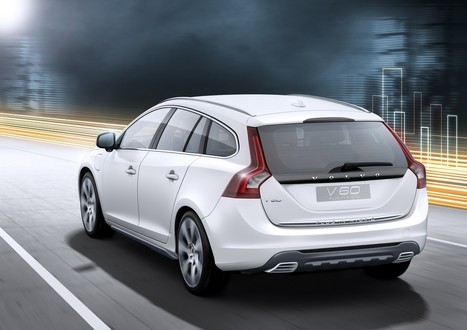
“Backed by the innovative power and spearhead technological competence of two industries, we have succeeded in creating a car that is truly unique in the automotive world. I’m very proud of the fact that Vattenfall and Volvo Cars are the driving forces behind the development of transport solutions that tackle climate issues and society’s oil dependency. With renewable electricity from Vattenfall, the plug-in hybrid can be driven with minimised climate impact and local emissions. The result of the project emphasises that the future of the car lies in electrification,” says Vattenfall’s President and CEO Øystein Løseth.
Volvo Cars’ President Stefan Jacoby agrees: “No single industry or organisation can tackle the climate challenge on its own. It is Volvo’s mission to develop carbon dioxide-lean cars, but a sustainable future must be built up jointly by everyone concerned. This project shows how cooperation between experts in different areas takes us one step closer from individually carbon dioxide-lean products to a well-thought-out climate-smart lifestyle.”
“In order to persuade true car enthusiasts to think green, you have to give them the opportunity to drive carbon dioxide-lean but without diluting the adrenaline kick that comes with genuine driving pleasure. This second-generation hybrid is the perfect choice for the uncompromising buyer who wants a car with superior green credentials and a thrilling drive,” says Stefan Jacoby.
